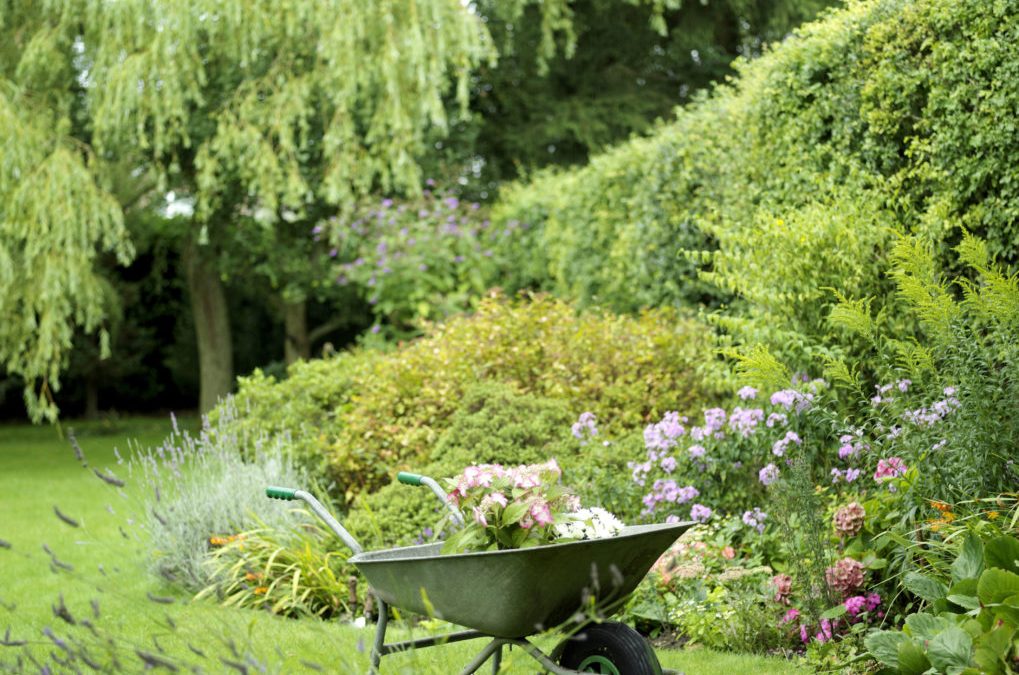While many people love their clipped hedges and manicured lawns, there’s just something so inviting about a garden that’s left more natural. If you’re ready to invite a little nature back into your own yard, here are a few ideas to get the look of a naturalistic garden.
What Is a Naturalistic Garden?
The term “naturalistic” can mean different things to different people, but essentially, a naturalistic garden combines a gardener’s needs and desires with nature’s potential. Because of this, a naturalistic garden is supposed to look different in different parts of the country. That’s what makes them so interesting!
Vines ramble over structures, pathways nearly disappear among billowing grasses and flowers grow freely among garden beds. Butterflies, birds and other wild creatures feel most at home in this type of garden, finding plenty of sources of food and shelter. That’s why many landscape architects refer to natural gardens as art shaped by science.
They are in no way generic—each one is wild and unique. The diverse native flora, land forms, soil, climate, and other regional characteristics make them all so different from what everyone else has in their yard.
How to Get the Untamed, Naturalistic Garden
Naturalistic garden designs can be adapted to spaces of all sizes. Depending on the climate, your garden could feel like a shady forest retreat, with plenty of ferns, shrubs and woodland flowers, or it could resemble a sun-drenched oasis, filled with low-water plants.
Softscape
For the garden’s softscape, you’ll want to anchor the garden with a few evergreen shrubs for structure and then allow smaller shrubs, ornamental grasses and perennials to fill in naturally. Don’t worry about overlapping and spilling, as this is all part of having a natural garden.
Hardscape
Now, when we talk about hardscaping for a natural garden, we like to use all natural materials (native boulders, local stone, gravel and recycled wood) for walls, walkways and fences.
The goal is to keep human-made structures to a minimum, choosing hardscape designs that blend with the natural landscape.
Other Garden Elements
There are many other garden elements you can use to complement your natural garden.
- Flexible seating areas. Portable furniture allows you to move your outdoor gathering spot according to what feels best in each season. Perhaps one area of the garden — such as under the canopy of a large shade tree — is more appealing in summer, while a spot that catches late-afternoon sun can be welcoming in winter.
- Gravel pathways. Understated gravel pathways help to draw the attention away from the walkway and toward the planting beds. Use organic curves and soften the border with plants that spill over the edges.
- Birdbaths and simple water features. Simple water features fit in well with naturalistic-style gardens, adding a soothing sound and providing a water source for birds and insects.
- Subtle art pieces. Houzz recommends nestling an empty ceramic container in a bed of wispy grasses and soft perennials to act as a focal point.
- Hidden elements. To create a feeling of discovery, place a meaningful statue or sculpture where it will be concealed from view until a visitor happens across it.
Plant Types
The USDA Plant Hardiness Zone Map is the standard by which gardeners and growers can determine which plants are most likely to thrive at a location. It’s also a great start in ‘planning’ your naturalistic-style garden. The following plants are great for these kinds of gardens:
- Flowering perennials. Plant exuberant perennials that have a loose, informal growth habit and allow them to soften edges and cover hardscape. Look for plants that don’t need much staking or other care to thrive, such as gaura (Gaura lindheimeri, USDA zones 5 to 9), ‘Rozanne’ cranesbill (Geranium ‘Rozanne’, zones 4 to 9) and catmint (Nepeta x faassenii, zones 4 to 9).
- Natives and other wildlife-supporting plants. Including a few (or all) natives, such as showy wild liliac (Ceanothus spp., zones 8 to 10), can give a natural look to your garden. Fill in with other wildlife-supporting plants, such as nectar-rich salvias and penstemons.
- Ornamental and native grasses. With their soft forms and carefree habit, ornamental and native grasses fit in well with a naturalistic garden. Use grasses to cover large areas or plant a few of them into garden beds to add texture and movement.
- Vines. Perhaps the easiest way to give your garden a wilder look is to plant vines that ramble over fences, walls or pergolas. The vines can hide human-made structures and can give a more untamed feel to a garden in a single season. Look for grapevines (Vitis spp.), fiveleaf akebia (Akebia quinata, zones 5 to 9) or pipevine (Aristolochia macrophylla, zones 4 to 8).
Naturalistic gardens have a subtle appeal and simple beauty that reflect today’s concern for the environment. While they may not be everyone’s cup of tea, they are worth the effort for many reasons.
Do you have a naturalistic garden? We’d love to see it! Comment with a picture below!


Recent Comments